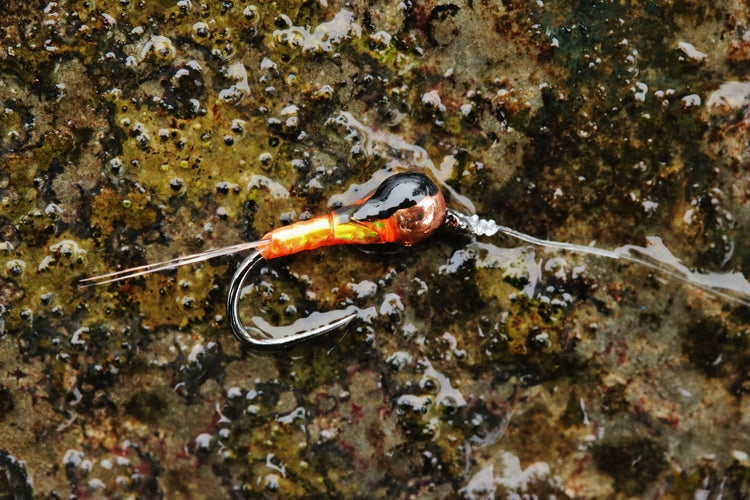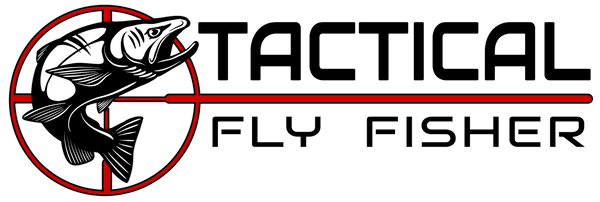
BUTANO NYMPH FLY TYING TUTORIAL
Share
It was July 2007 and I was standing on the banks of the Big Wood River with my late great teammate the wild man Eddie Pinkston at a Fly Fishing Team USA practice. He took a look in one of my boxes that was full of tightly wound heavy Czech nymphs and said something like, “boy they really tricked you into those didn’t they?” Eddie was an extremely gifted fisherman and I put a lot of stock in his advice. Basically, he wasn’t a big believer in flies that didn’t have hackle, spiky dubbing, or appendages designed to create movement. His advice, combined with my own preconceived biases, lead me to pursue flies which included spiky or fuzzy materials and to shun flies with hard bodies and little in the way of moving filaments for many years. I continued to discount these types of flies, even when I saw results from other anglers which should have lead me to believe otherwise. Somehow I was also blind to the fact that my thread body midge pupa were catching plenty of fish too, when I called on them. I hope there are plenty of other anglers out there who exemplify contradiction as much as I do.
Anyway, seven years later, in July 2014, I was standing in the Truckee River fishing a mock competition with my good friend and fellow competitor Luis Hernandez, who had brought his Spanish skills with him while he was completing a post doc at UC Berkley. We had set up some short beats and given each other two hours to fish them. We each had a clicker and when we met up when the two hours were over we each had 19 fish; a respectable number for the Truckee in a couple of hours, especially during the height of the drought that is hopefully now ending. We shared the flies we each had used during our sessions. I had been using a Blowtorch (a tag nymph that I’ll be posting a tutorial of soon). Luis was using his “tinsel bug”, which I later found out he called the Butano after its resemblance to the color of the flame from butane lighters. Apparently referencing fire in a fly’s name somehow must make it successful. As I fished every other week with Luis throughout the rest of the year, if we fished a river he almost always had a Butano attached to his tippet. Not coincidentally, he always caught a lot of fish.
The Butano is one installment in the suite of perdigon style nymphs (perdigon = pellet in English) that Spanish competitors have made so famous in recent years. From the reading I’ve done, it is a style of fly that apparently was invented by French anglers, but Spanish anglers brought them to the forefront of the European competitive fly fishing scene. Perdigon style flies are the absolute opposite of what Eddie Pinkston would have fished, but they are deadly nonetheless. It’s a shame I didn’t give them a solid college try earlier in my fly fishing career. I would have liked the results. Perdigon flies are typified by a thread, tinsels, or any other slim sleek body material, which is covered in glue, UV resin, or epoxy. Other than their tails, they have no fibers to drag in the water and slow their descent. When combined with a tungsten bead they sink like a rock, or apparently like a pellet. Any number of variations, with different materials, can be created. In this tutorial, I’ll share with you Luis’s original color scheme and I also list the materials for three other variations that have been quite good to me. I’ve only been fishing these flies for a year and a half now, but they have gained their own fly box and caught numerous trout for me. I even landed a one salt steelhead last Saturday (12/26/15) while fishing my Cortland Competition 10’ 6” 3 wt, 5x tippet, and the opal mirage variation of the Butano listed below in a size 14. That steelhead is pictured next to my rod in the video tutorial intro.
The peacock butano in action
I fished some more muted color variations our guides showed us, during the World Fly Fishing Championships in Bosnia this year. Of the fish in the rivers I caught on nymphs, about half ate a drab pheasant tail and the other half fell to two perdigon patterns. I’ll share these in a future post. Here at home, I like multiple versions with the recipes below.
Original Butano:
- Lead Wire: Hareline Lead Wire 0.15"
- Thread: 16/0 Veevus Fl. Orange
- Tail: TFF Coq De Leon or Fasna Coq De Leon
- Body: Fl. Fire Orange Krystal Flash. I also really enjoy peacock, pearl, opal mirage, root beer, and UV blue versions. You can adjust thread colors under the krystal flash to change the overall color of the fly. You could also check out Textreme's assortment of crystal flash for body material.
- Wingcase: UVCraft Black Resin



